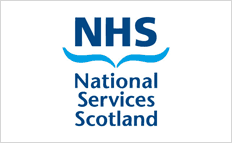Cobalt (Co)
Cobalt is an essential element found principally in vitamin B12 (cyanocobalamin). Determination of nutritional adequacy is therefore more conveniently assessed through measurement of plasma vitamin B12.
Exposure to cobalt and its compounds occurs in the hard metal industry, cobalt refineries, specialist alloy manufacture, magnet manufacturing, the paint industry and in diamond tooling.24 The main effects noted in humans result from dust inhalation and skin contact. Prolonged inhalation can result in respiratory sensitisation and asthma, and skin contact can lead to allergic dermatitis. Although it does not accumulate in the body, chronic ingestion of cobalt can result in cardiomyopathy.
Measurement of urinary cobalt concentrations on samples collected at the end of a working shift can be used as a guide to exposure.25 It has a very short half-life and after exposure urine concentrations can drop to normal concentrations within 2 to 3 days.
Measurement of chromium and cobalt in whole blood is used to assess the viability of metal-on-metal knee and hip joint implants. The Medical and Health Regulatory Agency (MHRA) has issued advice on monitoring patients.20 The toxic effects, such as tissue damage, pseudo-tumour and soft tissue necrosis around the site of the implant, are thought to be due to cobalt ions.
Further Information
Cobalt and You, Health and Safety Executive, Bootle, UK.
CDC Web-site: Cobalt
Sample Requirements and Reference Ranges for Cobalt
| Sample Type | Whole blood, urine (random) |
|---|---|
| Container |
Blood: EDTA Urine: universal container |
| Precautions |
Blood: Send by first class post to arrive within 72 hours of collection. If delivery to Glasgow will be outwith 72 hours, store whole blood frozen until sending and then send by first class post. |
| Minimum volume |
Whole blood: 300 µL* (Cr can be analysed simultaneously on this volume). Urine: 1 mL |
| Reference ranges |
Blood: < 10 nmol/L23,96,97 MHRA action limit: 120 nmol/L (7 µg/L)20 N.B. MHRA threshold does not apply to stemmed total hip replacements Urine: < 1.6 nmol/mmol creatinine93 |
| Turnaround time | See this page for STEMDRL TAT targets |
| Method |
Inductively coupled plasma mass spectrometry |
| Traceability |
Blood: Traceable to reference material produced in accordance with EN ISO 17511:2003 “In vitro diagnostic medical devices. Measurement of quantities in biological samples. Metrological traceability of values assigned to calibrators and control materials”. Urine: Traceable to reference material produced in accordance with EN ISO 17511:2003 “In vitro diagnostic medical devices. Measurement of quantities in biological samples. Metrological traceability of values assigned to calibrators and control materials” and reference materials with values determined by reference laboratories. |
| Intermediate Precision (CV) | See this page for latest data |
| Measurement Uncertainty, U | See this page for latest data |
| Analytical Goals (CV) | See this page for latest data |
| EQA Scheme | Blood and urine: UK NEQAS, Guildford (once per month) |
| Included in UKAS scope? | Blood and urine: Yes |
* Absolute minimum volume; this volume is insufficient to carry out repeat analysis if analysis fails.

